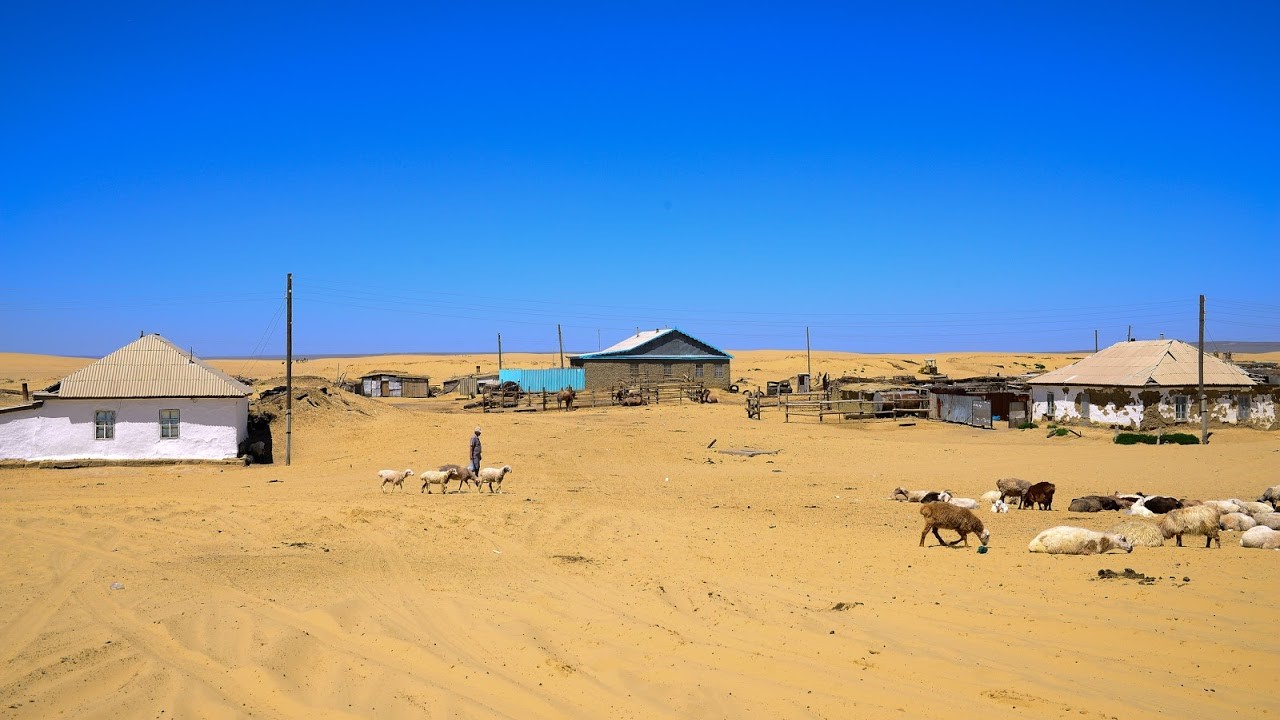
Home farms on sandy ground
Photo by Zhanat Aitkhozhin (CAMP4ASB)
#UNCCD #SDG #Landdegradation #LDN #CAREC #DroughtandSDS #CentralAsia
All over the world, natural resources are under increasing pressure due to growing population, urbanization and mismanagement. As demand for food, water and energy is growing, a large proportion of land-based ecosystems are experiencing degradation at an increasing pace. According to the United Nations Department of Economic and Social Affairs (UN DESA), about 20-30% of the Earth’s vegetated surface has demonstrated a decrease in productivity, which has mainly been the result of land and water misuse and unsustainable practices.
Currently, over 1.3 billion people around the world have to use degrading agricultural land to sustain their living. While most of them, especially farmers, do not have opportunities or capacity to find alternative ways of making a living, others are relentlessly forced to migrate in numbers previously unseen in human history. This has put an additional strain on land and water resources and permanently changed the landscape as we know it, effecting the future of the environment in an adverse way.
In addition to exposing billions of people to increased risks of famine and drought, land degradation increases the vulnerability of numerous regions to environmental stresses, including sand and dust storms and other natural hazards. Such stresses can lead to competition for scarce natural resources, which often results in forced migration, political and social instability and public unrest.
One of the Sustainable Development Goal (SDG), put forward by the UN, aims to achieve Land Degradation Neutrality (LDN). The purpose of LDN is to reach a balance between three processes: land degradation, land rehabilitation or restoration and sustainable land management. LDN is a goal that will help reach other priorities within the SDG framework, such as conserving biodiversity and combating climate change. Eventually, achieving LDN will stimulate economic growth and promote human wellbeing all around the world.
One of the main pillars of LDN is the 2018-2030 Strategic Framework developed by the Secretariat of the United Nations Convention to Combat Desertification (UNCCD). The aim of the Strategic Framework is improving the livelihoods of more than 1.3 billion people through restoring the productivity of degraded land and reducing the impact of droughts and sand and dust storms (SDS). Ultimately, the Strategic Framework strives for achieving a land degradation-neutral world.
Established in 1994, the UNCCD is an international framework agreement that links environment and development to sustainable land management. The Convention focuses on the arid, semi-arid and dry sub-humid areas of the world, which house some of the most vulnerable ecosystems. In addition to that, the Convention encompasses approaches that encourage the participation of local people in combating desertification and land degradation and facilitate cooperation between multiple stakeholders around knowledge and innovative technology transfer for sustainable land management.
In Central Asia, where the climate is characterized as being arid to semi-arid, the UNCCD is committed to addressing the negative impact of droughts (decisions 29/COP.13 and 23/COP.14) and SDS (decisions 31/COP.13 and 23/COP.14) in partnership with national environmental institutions, NGOs, state actors, experts and the Regional Environmental Centre for Central Asia (CAREC). The UNCCD Secretariat has supported the Central Asian countries in enhancing their preparedness and resilience to drought and SDS through a pilot project implemented by CAREC. With this assistance, Central Asia will boast stronger regional advocacy and capacity in reducing the risk of drought and SDS and mitigating their impact at national and regional levels.
Information about the Project:
In January 2020, in all five countries of Central Asia with the financial support of the Secretariat of the United Nations Convention to Combat Desertification (UNCCD) the project “Regional approaches in combating sand and dust storms and drought” was launched. The project is implemented by the Regional Environmental Centre for Central Asia (CAREC), which works in close cooperation with designated national institutions and UNCCD National Focal Points in each of five countries.
The main objective of the project is to assist Member States in improving their preparedness and resilience to droughts and FDP, and to enable coordinated action and data exchange at national and regional levels.
You can learn more about the Project and its activities here:
